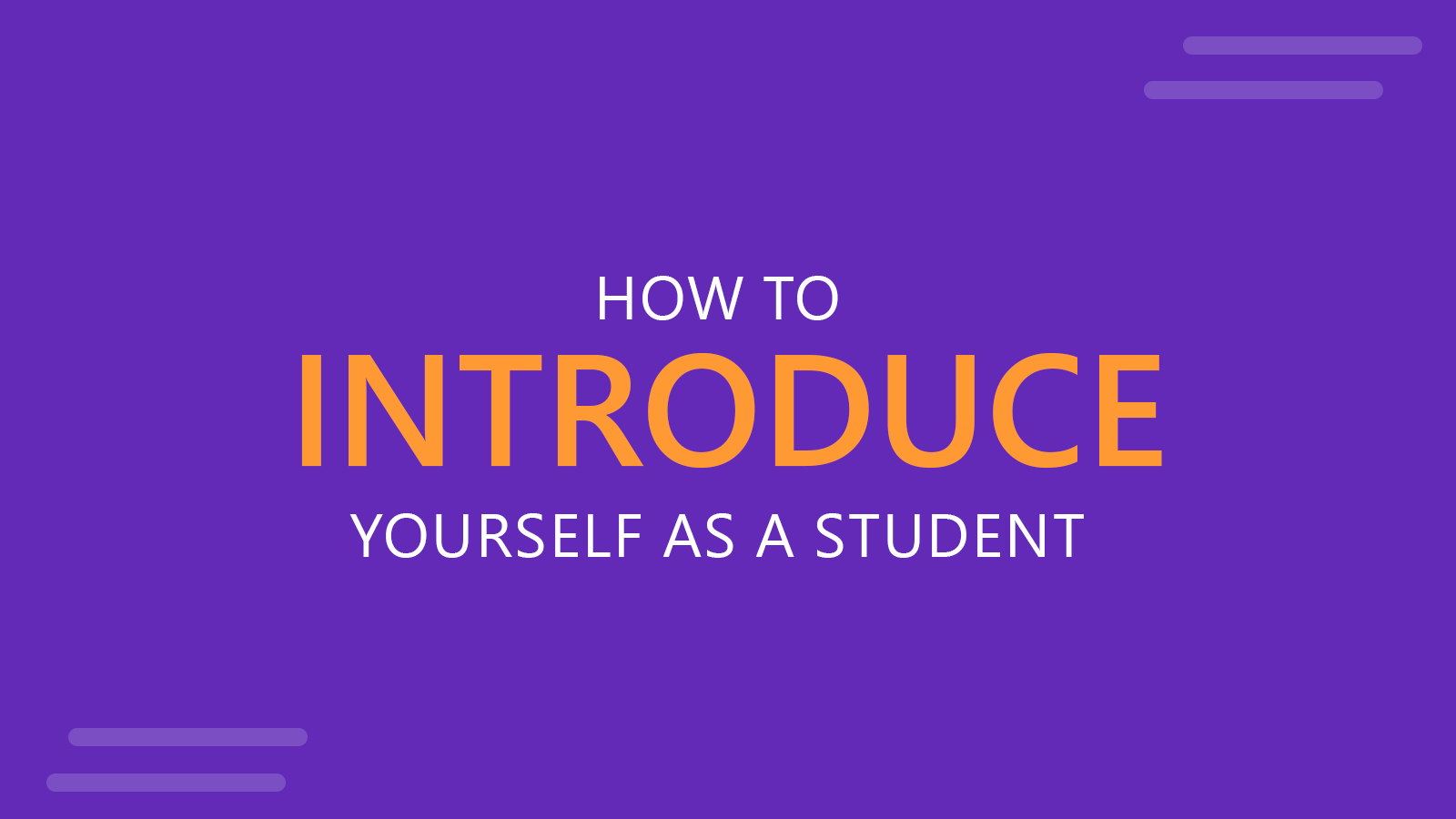How to Introduce Yourself in a Presentation as a Student
Last updated on April 18th, 2024

When you step in front of an audience, the first 30 seconds can set the tone for the entire presentation. A strong introduction is essential, not only to make a great first impression but also to grab the audience’s attention and make them interested in what you have to say. Introducing yourself effectively is a valuable soft skill also for students across various contexts. In this article, we’ll explore effective strategies for introducing yourself in a presentation as a student.
1. Understanding Your Audience
Before crafting your introduction, it’s important to know who you are speaking to. Whether your audience consists of classmates, professors, or industry professionals, understanding their expectations and interests will help you tailor your message. For example, classmates might appreciate a more casual and relatable approach, while professionals may expect a formal tone. Depending on your audience, you may consider different opening speeches for your presentation.
2. Preparing Your Content
Your introduction should include several key elements:
- Name and Academic Background: Start with your name and your field of study, which establishes your identity and credibility.
- Purpose of Your Presentation: Clearly state what you will be discussing and why it matters.
- Objectives: Briefly outline what you hope the audience will take away from your presentation.
Keep your introduction concise; aim for no longer than a minute. This keeps the audience engaged and eager to hear more.
3. Demonstrate with Examples
Use examples to illustrate your points. How do i introduce myself with examples? Present a side-by-side comparison of a weak and a strong introduction, highlighting the differences and explaining why certain elements are more effective. With the help of visual comparison slides you present these concepts yourself. This visual and practical comparison helps solidify the concepts for your audience.
4. Interactive Elements
Incorporate interactive elements to maintain engagement. After discussing a few tips, pause to ask the audience to briefly refine their own standard introduction in their mind based on what they’ve learned. This keeps the audience involved and thinking actively about applying the tips. You can learn more about this in our article about interactive presentations.
5. Visual Aids
Utilize visual aids to enhance understanding and retention. Include simple graphics, such as icons or short clips that demonstrate good versus poor posture, or how to use hand gestures effectively. These visuals should support your spoken content and provide clear, memorable cues.
6. Body Language and Tone
As you present, consciously use effective body language and tone of voice. Comment on your own use of these tools as you go, such as explaining, “Notice how I’m making eye contact with different parts of the room to engage everyone.” This live demonstration teaches by example.
7. Q&A Session
Conclude with a Q&A session, inviting the audience to ask questions. This interaction not only clarifies any uncertainties but also encourages immediate application of the tips discussed. It provides a dynamic ending that reinforces learning and interaction.
8. Provide Takeaway Resources
Offer resources at the end of your presentation. Hand out a one-page summary of key points or direct them to a website where they can access more detailed materials. This helps the audience remember and apply what they’ve learned beyond the presentation.
9. Follow-Up Activities
Suggest practical follow-up activities. For example, challenge them to use the new techniques in their next class presentation or at a student networking event. Encourage them to record their practice sessions for review and improvement.
Possible Use Cases for Student Introductions
Now that we have seen what are strategies to introduce yourself as a student, let’s dive into different ideas and real case scenarios in which students need to face self-introductions.
- Class Presentations: At the beginning of a presentation in class, students need to introduce themselves to set the context and connect with their audience, usually their classmates and instructor.
- New Class Introduction: On the first day of a new class, students often go around the room and introduce themselves. This helps in building a sense of community and familiarity among classmates.
- Group Projects: When students meet for the first time in a new group project setting, a solid introduction can help establish credibility and start building trust and teamwork among group members.
- Job Interviews: Students introduce themselves at the beginning of job interviews to make a positive first impression. This is crucial as it sets the tone for the rest of the conversation. For this purpose, a free job interview PPT template can help.
- Networking Events: At career fairs, workshops, or any student networking events, introductions are essential for making new professional connections and sharing interests and career goals.
- Scholarship Interviews: When competing for scholarships, students must introduce themselves to panels, effectively conveying their achievements and aspirations to stand out among other candidates.
- Online Classes or Meetings: In virtual learning environments or during online seminars, students introduce themselves to participate in discussions, making their online presence felt and engaging with peers and instructors.
- Student Conferences: Whether presenting a paper or attending panels, students use introductions at conferences to establish their academic interests, share their studies, and engage with like-minded peers.
- Residential College Events: At dorm or college residence events, students introduce themselves to neighbors and peers, fostering a sense of community and shared living cooperation.
- Exchange Programs: Participating in student exchange programs involves introducing oneself to host families, new academic communities, and fellow exchange students, which can aid in cultural integration and building international friendships.
Conclusion
Mastering the art of self-introduction is a crucial skill for any student. By preparing thoughtfully, practicing your delivery, and engaging with your audience, you can ensure your introductions make a strong impact. Remember, a powerful introduction sets the stage for a successful presentation, and practicing these skills can make a significant difference in how your presentations are received.
